Sitting for too long while working can cause sciatica pain. So, if you have a desk job then we prefer you to buy a standing desk to reduce the pain. Here we have mentioned how standing desks help with sciatica pain.
How Does It Help?
Quick Navigation
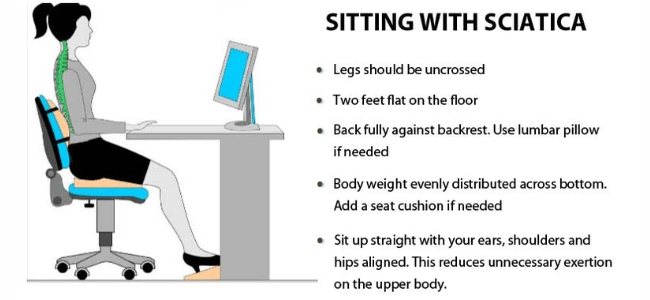
Studies equate that excessive sitting causes many health problems. Such as diabetes, obesity, cardiovascular disease, sciatica, swollen feet, and metabolic syndrome.
But have you thought about how to make the most of your standing workspace by using a standing desk?
The truth is that if you do not correctly utilize this furniture you won’t get any results. Our health and productivity will suffer.
Despite your efforts to improve your workspace, you are likely to live a shorter life. To be safe, keep reading to find out what you need to do to get the most out of your stand-up sit-down workstation.
Use a standing desk to assist reduce strain around the spine. Standing in an appropriate posture can help relieve lower back stress. It also reduces sciatica pain caused by a ruptured or bulging disc.
How To Use Standing Desk To Reduce Sciatica?
1. Adjust Desk To Your Elbow’s Height
If you want to sit while working, make sure your elbows are bending at a 90-degree angle. While doing so, keep your hands right in front of you and your neck normal. Relax your wrists so that your hands should be able to glide over the keyboard.
If you can type comfortably without your wrist slanting up or down. You are successful at adjusting the standing desk.
Your knees should also be a little bent to avoid locking the joints. Straighten Your Wrists. The surface of your stand-up sit-down desk should be parallel to your wrists.
Allowing your fingers to hang down towards your keyboard is a good idea. Besides, your wrist should never slant up or down.
2. Standing Sitting For A Long Period
Sitting for too long is the biggest mistake to avoid. Once you’ve figured out how to use a best standing desk, keep in mind that too much standing can hinder the benefits. You can start by standing for two hours per day. After some time you will get a habituated stand for long hours. With the help of a good adjustable standing desk converter you can change from sitting to standing every now and then.
3. Learn When To Sit And When To Stand
Sitting for so long periods is unfavorable to your health. Though, as we have seen, excessive standing is not healthy. Research states that standing for long periods leads to lower back pain. You can Use a good recliner for your back pain relief.
Luckily, you can avoid this by standing and sitting from time to time. Standing and sitting should be in a ratio of 1:1 or 1:2. This implies you should aim to switch every 30 to 60 minutes. Always prefer a sciatica pain relieving chair to place on your standing desk.
4. Anti-Fatigue Mat Isn’t Available
Anti-fatigue mats would be beneficial. Some people think that they won’t have to stress about anything else once they have a standing desk. Always place the best anti fatigue Mat under your standing desk.
Whether you notice your feet becoming tired or not, you should invest in a good anti-fatigue mat. You need an anti-fatigue mat if your piece of work requires you to stand for a long time.
These mats increase leg muscle activity. It boosts blood flow and lowers discomfort while performing your job duties. The disc’s ability to respond to spinal strains also increases.
5. Every Hour, Go For A Little Walk
If your job needs you to sit for long periods, get up every hour and walk a small distance.
Treatment For Pain
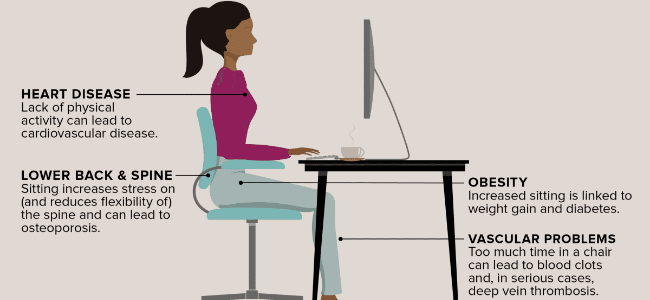
The nerve glide exercise is a beneficial workout for herniated discs. You can comfortably perform this while sitting at your workplace.This practice aids in the relaxation and deadening of your sciatic nerve.
To complete this activity, follow these steps:
- Sit in a chair upright and straighten one leg while keeping the other flat on the floor.
- Your toes point towards you, and slowly curve your ankle.
- Curve your ankle in and out, control your toes off from you, then back in your direction.
Attempt the same nerve exercise with your head tilted forward. Guide your chin in the direction of your torso as tolerable.
Change to the other foot after pushing your first ankle 15 to 20 times and continue the exercise. Try to complete 3 rounds for each leg, two times a day.
Benefits
A standing desk has its own benefits here we have listed some of the health benefits of the desk that can help reduce the pain of sciatica. You can get a very nice standing desk under your budget.
a. Reduces Obesity
Obesity and weight gain are less likely. Studies prove that standing for a full afternoon has burned more than 170 calories. This corresponds to approximately 1,000 more calories expended every week. Without even considering the impact of exercise and other activities.
When you stand, you have a better chance of avoiding weight gain and obesity with less effort. Your spine will lengthen and become less stressed as a result of choosing to stand.
b. Improves Posture
Standing with your back in a natural S shape will improve your posture. While also providing relaxation to your spine. To get a better posture, you’ll need to know how to sit and stand appropriately at your new standing desk.
Here is a tip for computer users. It’s simple to set up a sciatica-friendly computer workspace. Consider the following three suggestions:
- Place the monitor at eye level in front of you.
- Place mouse and keyboard nearby—refrain from grabbing for them.
- Select a chair that offers enough back support.
- Make sure your legs aren’t crossed.
- Place your feet labelled on the ground.
- Maintain a 45-degree angle between your hips and knees.
- Use the wheels on your chair to twirl and turn yourself if it has them.
c. Helps To Reduce Type 2 Diabetes
One research was done on why sitting for long periods increases your risk of type 2 diabetes. It stated that your body has to work more to absorb sugar and produce insulin when you’re sitting. Inactivity slows the enzyme that leaves fat in circulation at a remarkable rate.
Raising the risk of heart disease. You don’t need to exercise. Just improve your activity level”. Dr Hamilton believes that everything will improve by frequent mild movement. Walking rather than strong exercise is the most effective approach toward healthy insulin.
Reported by Harvard School of Public Health. Sitting for two hours while watching television raises your risk of type 2 diabetes by 14%.
d. Cure Cardiovascular Problems
Spending less time sitting and more time standing helps to lower blood sugar and cholesterol. Altogether it reduces the chances of heart disease.
According to many studies, the longer we sit, the more likely we are to get heart disease, diabetes, and cancer. Whether we’re sitting at the computer or on the couch watching TV.
Spending too much time on our bottoms raises our risk of dying from any cause. Regular exercise is a great method to keep your heart healthy and enhance your gross health.
The most common hurdle in increasing physical activity is time. It is much better to have a little exercise than none at all.
Even if your profession or lifestyle doesn’t need you to stand much, most of us can find methods to do so. You can even include standing in your workday.
See whether your co-workers are willing to commit to a true “standing meeting.” Rather than relying on public transportation. Get up and walk to your office if possible.
Rather than relying on email, get up and stroll to your co-worker’s office. And instead of settling into that extra chair, take a stand while you speak. You might also inquire about purchasing a standing desk from your workplace.
They are twice probable to have heart failure in the future. People spend greater than six hours every day sitting at the workplace and do no exercise.
They are twice as likely to develop heart failure. As those who work out daily and sit for less than one to two hours per day
e. Reduces Calories
As we all know standing burns more calories than sitting. You can witness this if you have ever worked for a food retailer’s job and as an office employee. If you work in an office for a regular five-day, eight-hour workweek.
You will notice an additional 1000 calories after every 7 days. Standing will make you slim and also brings down your chances of getting heart disease.
Why Prolonged Sitting Is Not Prefered?
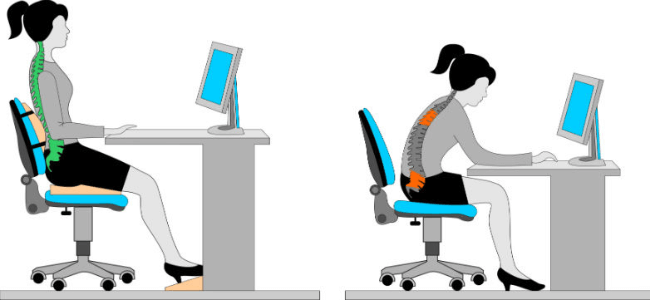
When we sit, the entire weight of our upper body is supported by our lower back. The pressure on the spinal cord has the sciatica nerve. This is where the symptoms of sciatica appear.
Sciatica is more likely to occur in those who have desk occupations, or jobs, that need to wear high heels. Jobs that need heavy lifting occur in those who are fat or elderly.
That is why experts suggest no sit for more than 10-15 minutes if you are suffering from sciatica pain. Try walking or stretching. This will help reduce pressure on the sciatica nerve. These are the most universal symptoms of sciatica.
How do you know the pain you are experiencing is sciatica? Well, we have compiled some of the most common symptoms related to sciatic pain:
- One-sided lower back pain is common.
- Gluteal pain that extends down one or both legs
- Pain that hits hard when you cough or sneeze
- Numbness
- Tingling feelings
- Muscle degradation
These symptoms might range from mild discomfort to excruciating shooting pains. The best you can do to avoid this is to choose accurate exercise equipment for your standing desk.
Final Talk
According to studies, cutting down on inactive time can help you live longer. A long duration of sitting can set you in danger of getting diabetes, heart disease, and even cancer. Reduced sitting time reduces your risk of developing certain health problems. Being bodily active is helpful.
People who usually sit more and are less bodily active are 94% and have 48% more probability to die. As compared to those who are more active and sit less. You can get lots of stress on your sciatic nerves if you sit for too long, but it can also cause varicose in veins, Especially if you aren’t using the correct cushy. Lower back discomfort and neck pain both can ease with correct ergonomics.

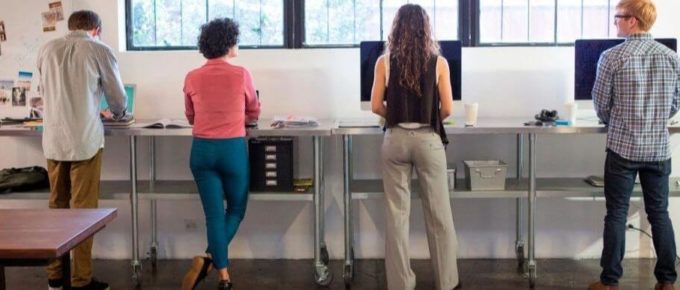
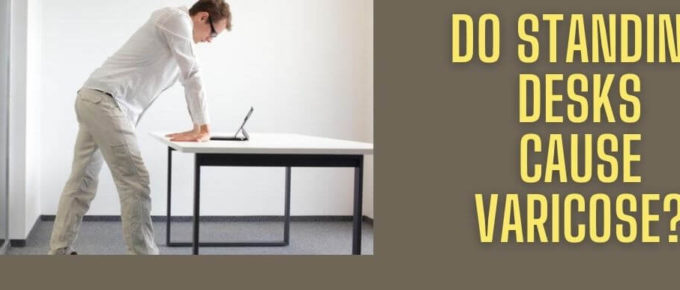

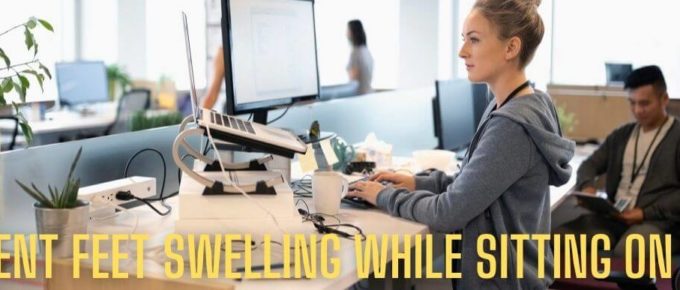
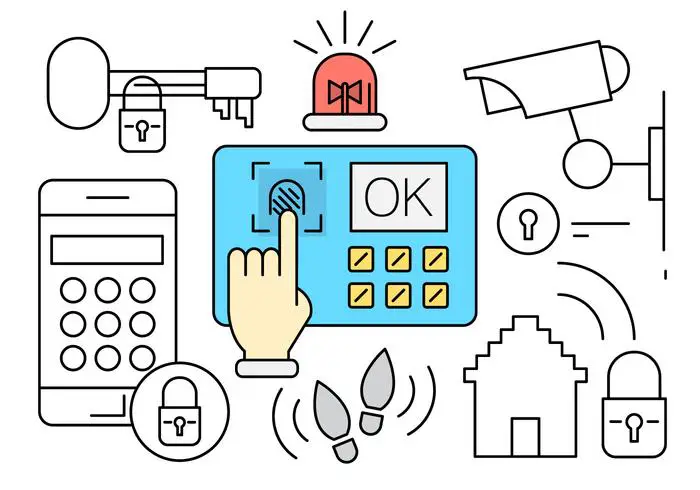

Leave a Reply